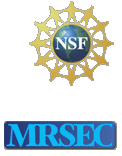Research Highlight #9:
Biomolecular Recognition-Mediated Fabrication of Tunable Quantum Dot Arrays with Surface-Plasmon-Enhanced Fluorescence
Melvin T. Zin, Kirsty Leong, Ngo-Yin Wong, Hong Ma, Mehmet Sarikaya & Alex K.-Y. Jen;
Materials Science & Engineering and Microbiology, University of Washington

We have developed a protein-enabled strategy to fabricate tunable QD arrays where up to 16-fold increase in the surface-plasmon-enhanced photoluminescence has been achieved. This result represents the highest fluorescence enhancement from hybrid nanostructures based on biomolecules. We have demonstrated the spectral tuning of plasmon resonant metal nanoarrays and the self-assembly of protein-functionalized QDs in a step-wise fashion with an increase in separation from the metal surface through biotin-streptavidin spacer units. This approach, therefore, permits a comprehensive control both laterally (i.e., lithographically defined gold nanoarrays) and vertically (i.e., QD-metal distance) of the collectively behaving QD-NP assemblies by way of biomolecular recognition.
Contact A. K. Y. Jen, for more details, ajen@u.washington.edu.
J. Mater. Chem., 17(9) 866 (2007).
Poly. Mater. Sci. Eng., 95 1071 (2006).



